Theatre Facts 2015 Overview Theatre Facts 2015, Theatre Communications Group’s in-depth industry report based on data from the TCG Fiscal Survey, examines financial, performance, and attendance data supplied by TCG Member Theatres for fiscal years concluding any time between Oct. 31, 2014, and Sept. 30, 2015. The report was written by Zannie Giraud Voss and Glenn B. Voss of the National Center for Arts Research at Southern Methodist University, with Ilana B. Rose and Laurie Baskin of TCG. Theatre Facts 2015, replete with detailed charts and graphs, can be found in the Research & Resources section of the TCG website, along with earlier Theatre Facts editions. The report presents three perspectives: The Universe section offers a broad overview of the U.S. professional not-for-profit theatre field in 2015, which included an estimated 1,750 organizations. The Trend Theatres section explores changes over time, with longitudinal analysis of the 125 TCG Member Theatres that participated in the Fiscal Survey yearly since 2011; there’s also data for 92 theatres that participated yearly since 2006. In this article, all references to Trend Theatres denote the five-year analysis, unless otherwise indicated, and all figures are adjusted for inflation. The Profiled Theatres section provides a detailed examination of all 198 TCG Fiscal Survey 2015 participants and breaks those theatres into six budget groups, based on annual expenses—from Group 1 (annual expenses of $499,999 or less) to Group 6 (expenses of $10 million or more).
At a moment when theatres are rethinking business models, trying to increase their relevance to local communities, and looking for ways to fairly compensate their staff, there’s not a lot of spare cash laying around (or time) to innovate. Yet theatres are making significant gains in issues at the heart of their survival. Here are 11 trends revealed in Theatre Facts 2015, the annual report on the state of the U.S. professional not-for-profit theatre field from Theatre Communications Group (TCG), with insights from managing leaders from a diverse group of theatres around the country.
Income is up, but expenses are up more.
Between 2011 and 2015, earned income grew 1 percent, contributed income grew nearly 9 percent, and expenses grew a touch more than 11 percent among the Trend Theatres. (See “Theatre Facts 2015 Overview” sidebar.) Theatres are by and large balancing their budgets, but many are feeling the pinch. Over the five-year period, 2015 saw the highest percentage (57 percent) of theatres with break-even or positive Change in Unrestricted Net Assets (CUNA represents the annual bottom line, indicating whether an organization brought in enough income to cover its expenses). But this leaves nearly half of theatres unable to end their year in the black.
Cash flow is strained.
Working capital has been negative in each of the past five years, indicating that theatres are borrowing funds (e.g., dipping into deferred subscription revenue, delaying payables, taking out loans, tapping lines of credit, etc.) to meet daily operating needs. Only 13 percent of the Trend Theatres maintained three months or more of available working capital in 2015.
“I have more and more questions about the nonprofit model,” noted Erika Mallin, executive director of Signature Theatre in New York City. “We’ve always been reliant on contributed income to survive, so the question comes back to, what does philanthropy look like over the next 15 years? When we raised $70 million in a capital campaign for our new building, one of the smartest things we did was build in $10 million for the transition to a larger space. In hindsight, I would have made that $20 million so we could build up cash reserves for 10 years.”
Richard Whittington, managing director of Greensboro, N.C.’s Triad Stage, spoke about re-envisioning their business model in response to the lagging economy. “Keeping up with the growth of expenses has been challenging because it creates a cash-flow issue. We are spending far more energy than we should on cash flow, but we’ve been working hard over the past 18 months on a new business model. We cut our budget by 21 percent, restructured the season to fit into the academic year, restructured more staff to work seasonally, and eliminated several positions. We’re developing new ways of working that don’t sacrifice our core values, but allow us to do things smarter.”
Even those theatres with solid cash reserves are busy strengthening multiple revenue streams so as to not be reliant on just one or two. Said Michael S. Rosenberg, managing director of California’s La Jolla Playhouse, “The team here has done a great job preparing for the predictable decline of Jersey Boys royalties so that when it goes away, we’re not forced to constrict, or worse, borrow. We worked on keeping expenses level and replacing that royalty stream with an increase in ticket sales and fundraising. We relied mostly on fundraising to make it work. We feel as a nonprofit that our prices should be more accessible than a Broadway tour, so our plan has been about building relationships with individuals, foundations, and companies.”
Another revenue stream some theatres depend on to cover cash-flow needs comes from investment earnings. Unfortunately, what might be considered “easy money” is susceptible to volatility in the capital markets. Average total investment income fell by more than 60 percent during the five-year period, driven primarily by swings in capital gains or losses.

More individual contributors are stepping up to give more.
La Jolla Playhouse isn’t the only theatre to see strong growth in contributions. Average combined individual contributions increased annually and grew by nearly 33 percent over the five-year period. The average number of non-trustee individuals giving to a theatre rose from 1,500 in 2011 to 1,584 in 2015, and the average gift from both trustees and other individuals was at a five-year high in 2015. Individuals were by far the greatest source of contributed income each year.
Mark Bernstein, managing director of the Repertory Theatre of St. Louis, summarized their experience as being in line with the trends for the field at large, saying, “We see very good growth in contributions from individual donors. Unfortunately there’s been a decline in our corporate support, principally because arts seem to be taking a backseat to community development and social services. More than anything, we’ve seen more people move up in their giving level over time. We’ve become much more savvy in the past few years around cultivation of donors, providing opportunities for them to get more engaged in the theatre and with the artists; that’s really paid off in terms of strengthening our bond with the donor.”
Learning how to build those bonds effectively, and with whom to build them, sometimes takes outside counsel. Tim Johnson, managing director of Kitchen Dog Theater in Dallas, reported, “We chose to take on campaign consultants for our capital campaign. It’s helped us establish a lot of best practices for the organization. We’re already starting to feel our immediate family grow. Now we have a cultivation plan driven by multiple touches.”
Johnson pointed to a lesson learned from a donor who approached him in the midst of a feasibility study for their capital campaign. “It was our first formal presentation. We did our presentation, and at the end, after some nonverbal signaling, they said, ‘We would like to offer you a challenge. If you can raise $125,000 in the next two months, we will make a gift of $500,000 toward the purchase of property.’ Part of their intent was to light a fire and inspire us. That was their message: Think bigger, make bigger asks, don’t be modest. And we met the challenge. Out of all the meetings we’ve had thus far, we’ve only had one decline. We haven’t had any sense that donors feel uncertainty financially. Dallas is booming, the real estate market is skyrocketing, and everyone seems to be feeling very positive right now.”
Individuals aren’t the only ones giving more. Foundation support also finished a five-year high in 2015, with overall growth of more than 33 percent. Signature’s Mallin gave her assessment: “I’ve been seeing institutional donors ganging together to have maximum impact on one area, or one art form, or one issue. They’re coming together to invest in remaking Detroit or addressing income inequality. So how do the arts show their relevance—how do we fit into those big agendas, that desire for foundations and individuals to make a huge impact?”
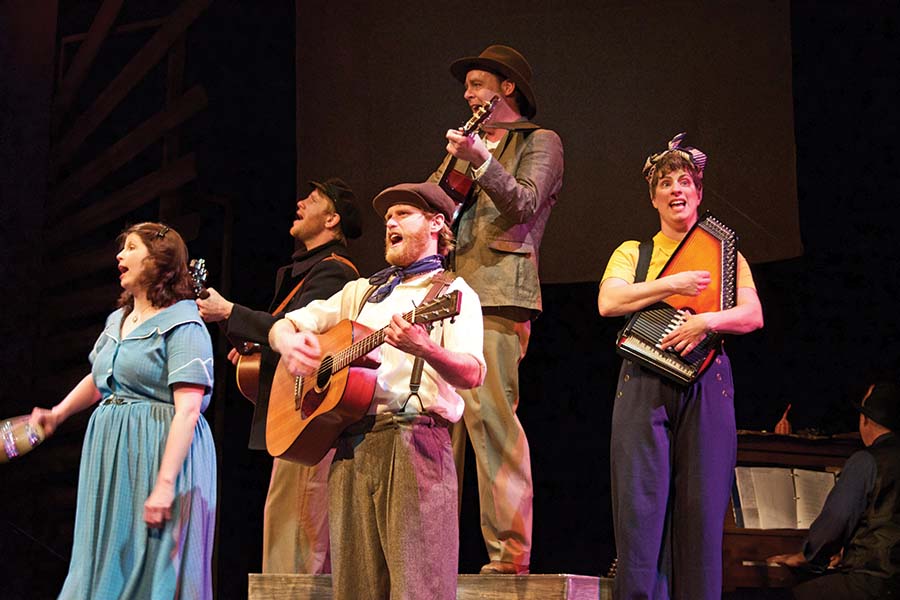
and Stela Burdt in “Woody Guthrie’s American Song” at Commonweal Theatre Company in 2015. (Photo by Jason Underferth)
Growing audiences remains a critical concern.
Trends in subscriptions and single tickets are a good news/bad news situation. Subscriptions remain the second-greatest source of earned income, but average subscription income ended 2015 essentially where it began in 2011, after adjusting for inflation. Average single-ticket income grew more than 10 percent over the five-year period, but it required 20 cents to generate each dollar of single-ticket revenue in 2015, while it required an average of just 10 cents to generate each subscription dollar. While the aggregate number of performances offered rose approximately 2 percent between 2011 and 2015, aggregate attendance fell nearly 4 percent.
Sue Ellen Beryl, managing director of Florida’s Palm Beach Dramaworks, said of their challenge with managing growth, “We moved into a larger building and tripled our capacity. In the smaller theatre, there was a clamor to be a subscriber, because otherwise you wouldn’t get a seat. And as we grew we opened up more performances. Because of that, we disrupted that sense of urgency. Now audiences can see that they can get a ticket anytime.”
For Hal Cropp, executive director of Commonweal Theatre Company in Lanesboro, Minn., connecting with new attendees is key. “It’s getting easier to convert the people who get to know us to come back once or twice,” Cropp said. “For the past four years, we’ve called every first-time visitor after they’ve seen the show. Their first question is usually, ‘Did you want to sell me a ticket?’ We tell them, ‘Nope, we just want to thank you for coming.’ This year, we went a step further and invited them back to a second show as our guest.”
Jon White-Spunner, managing director of Pennsylvania’s Bloomsburg Theatre Ensemble, noted, “We have to keep thinking of ways to stay relevant, like getting outside of our boxes and doing shows in unusual places. I come from South Africa; some of my most exciting memories are going to crazy places to see theatre and being so moved by it because it wasn’t in a theatre.”
Executive director Malik Gillani of Chicago’s Silk Road Rising described seeing their work embraced by the community, noting that it came after a long and deep investment. “One play blew our box-office numbers out of the park,” Gillani recalled. “It was a huge success and earned more than we expected from the whole season. But it was after five years of community-building around this topic, cocreating the play with the audience. How often can you do that? How do you sustainably build an audience and still produce on a regular basis?”
Gillani added, “There’s a limited set of people in Chicago going to see all this theatre. When I go out to see shows at other theatres with my artistic director, there are always multiple people in the audience who know us because they also come to our theatre. Audience growth across the city is hard; that’s one reason we’ve invested in digital work.”
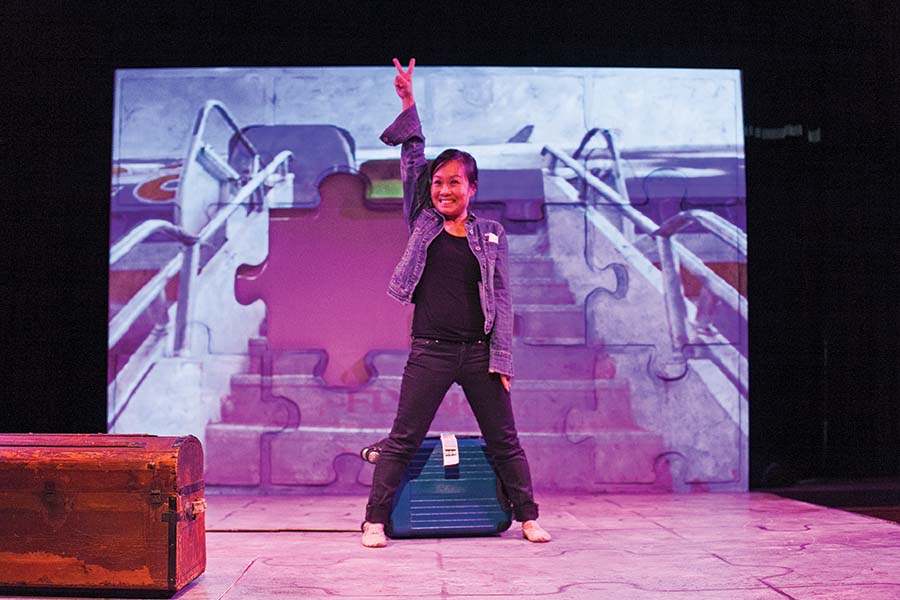
Theatres are taking advantage of digital marketing.
In 2015, theatres spent nearly 1 percent less than in 2011 on all marketing expenses to generate the same dollar of ticket sales. As theatres work to drive down marketing costs and engage with their communities in new ways, social media has started to feel less foreign, and theatres are increasingly investing in digital channels. Palm Beach Dramaworks’s Beryl reported, “We’re cutting back on things we’ve been doing for years, like radio and print, even though we have an older audience. Eighty percent of our marketing budget will be spent on digital marketing.” Said Silk Road Rising’s Gillani, “We’re mastering marketing better, social media in particular. Not everyone can attend a production, so we’re doing lots of digitizing, and people are watching it. We just released an animation online—nearly as many people saw that video as come to one of our productions.”
La Jolla Playhouse is also experimenting with animated digital shorts. “We’re great at telling stories onstage,” said Rosenberg, “but we don’t necessarily have the resources to develop the talent in-house to create short videos. We developed a relationship with a local comic book company; they’ve started making really interesting animated shorts for us. For a recent production, we exceeded sales goals by more than $25,000 and saw a younger, more ethnically diverse audience. We know from audience surveys that part of their decision to come to the play is because they had never seen a theatre do an animated thing like this before.”
Diversity efforts are targeting a wide range of issues.
Across the board, managing leaders shared examples of efforts to transform their approach to equity, diversity, and inclusion within the broader community and at all levels of their own organization.
Access to affordable tickets as a check on income inequality has been core to Signature’s mission for even longer than the decade their groundbreaking ticket initiative has been in place. As Erika Mallin explained, “Access has always been a challenge, but now we’re speaking the language of income inequality. We’ve targeted specific zip codes in the Tri-State Area with lower income levels and also identified swaths of occupations. So we’ll have a teachers’ appreciation night or a health-care workers night. We know you make $50,000 per year, which is not much in New York City; how can we invite you to be a part of Signature? When we do those specific outreach efforts, whether in social media ads or in a neighborhood putting up flyers, we can actually see that people are interested.”
Kitchen Dog Theater is also looking through a lens of economic diversity to remove real and perceived barriers of participation. Said Tim Johnson, “We’re trying to reach people who have never thought of this as an option. We’re hiring company members to do targeted outreach because they are already very active in the Latino community and other areas. We started an advisory committee to help market this program for us. What we present is already diverse—now we’re trying to find an audience that reflects the diversity onstage.”
La Jolla Playhouse is finding that for some audiences, diversity in the front of house is what’s most important. Rosenberg reported, “In some audience research we did recently, there were fascinating stories about people of color coming to the Playhouse and being less concerned about their own lives being reflected on our stages,” summing up their feedback as, “I don’t need to see a ‘Latino play’ just because I’m Latino, but I do want to see other Latinos when I look around the audience, the box-office staff, the ushers. That tells me how comfortable I can be in this situation. If I’m one of a handful of people who look like me, that’s a different experience.”
Another aspect of La Jolla’s audience research has been asking people how they self-identify. Rosenberg noted, “For many here in the San Diego area, a big one is military versus civilian, so we’ve been ramping up our relationships with military members and their families. Not just, ‘Please buy a ticket to our show,’ but also, ‘Please apply to jobs here.’ We’ve made an active choice to be present at military job fairs. We’re growing the number of military spouses who work for us and people who recently transitioned out of the military.”
Elizabeth Kegley, executive director of Merrimack Repertory Theatre (MRT) in Lowell, Mass., noted, “There’s more work we can do. Even though a third of Lowell’s population is Cambodian, we don’t have any Cambodian representative on our staff or our board. We want to change that. We have a new community-engagement initiative to go out to the Cambodian community to ask them what stories they’re interested in, what stories they want to see onstage, to help us identify a network of audiences. We’re too local to not pay attention to the people walking past our theatre to work and home.”
Victoria Nolan, managing director of New Haven, Conn.’s Yale Repertory Theatre, said of their efforts, “We’ve been very active on the equity, diversity, and inclusion (EDI) front. In 2015, James [Bundy, Yale Rep’s artistic director] had just returned from an artEquity diversity training with Carmen Morgan”—a partner in TCG’s EDI Initiative—“when he said in his opening speech for student orientation, ‘I have been too discreet about my desire to be an ally, out of a desire not to make the wrong moves. I regret the error, and I resolve to be more willing to make mistakes in the future.’ That started us on a path. We hired Carmen as a lecturer, made [EDI] training a requirement for first-year students, and optional for all other students, faculty, and staff. Students are now leaving the school with more confidence and a high-level understanding of interrupting behaviors. We’ve also instituted the equivalent of the Rooney Rule in the school, which has significantly increased the hiring of people who identify as women and people of color.”
MRT’s Kegley echoed a similar push from artistic director Sean Daniels, who joined the company in 2015. “It was important to Sean in his first season to have more women and people of color in artistic roles than any previous season in the theatre,” said Kegley. “This year he applied that not just to actors, directors, and playwrights, but also to designers. One play this year has a female director and an entirely female design team. The director went out and identified designers of color and female designers. She created a spreadsheet of their contact information that she has shared with colleagues, so people can’t say they can’t find anyone but this white male designer. It takes work; you have to look for it, but you can do it.”
As a theatre that tells stories through primarily Asian-American and Middle Eastern-American lenses, Silk Road Rising recognized an opportunity for change beyond their own organization. Said Gillani, “One service we’ve been offering is to go to theatres doing mostly white work and ask them to partner with us. My pitch is: You can’t become diverse overnight. We can bring connections to a network of actors, audiences will give us the benefit of the doubt, and the work is done in our space so that it’s already a familiar place for an audience.”
He continued, “We drink our own medicine too. I have been thinking about how to use all the talent we see at auditions from young people of color. We’ve also been taking risks with new designers of color, helping them build their reputations. For a long time we complained about underrepresentation—then we realized we needed to be part of the solution.”
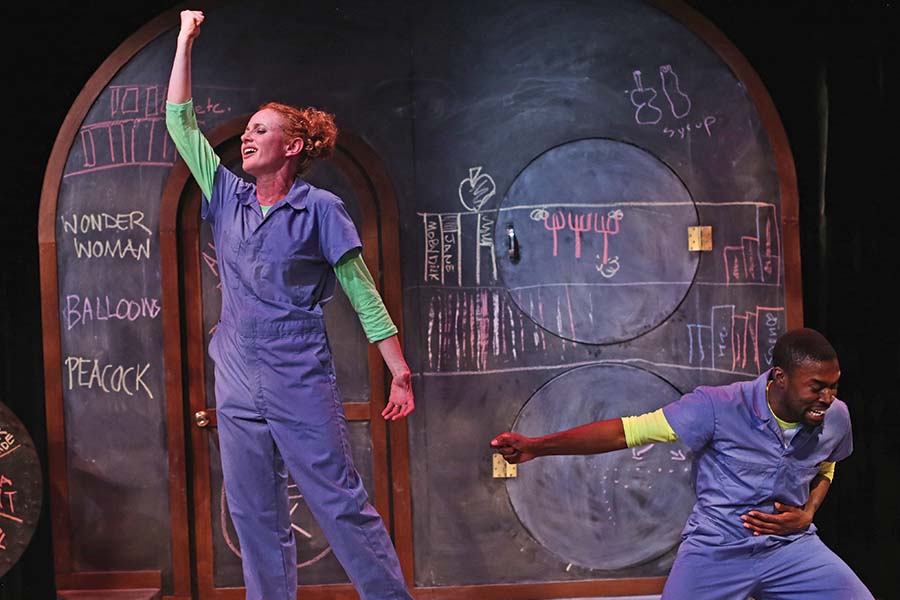
Children’s series and education/outreach activity continue on an upward trend.
Attendance at children’s series (i.e., production series for young audiences by theatres not defined as a Theatre for Young Audiences) grew nearly 12 percent in the five-year period, while income from children’s series grew 24 percent. Average income from education/outreach programs (non-ticket earned income from classes, lectures, workshops, etc.) was also at a five-year high in 2015, growing by nearly 28 percent from 2011.
Said Triad Stage’s Richard Whittington, “When we first got here 15 years ago, there were a lot of smaller theatres providing programs for youth. By 2014, we saw those companies were no longer providing that opportunity, but the need has grown exponentially because theatre isn’t offered in schools anymore. As the leading theatre in this region, there was a responsibility we felt we were abdicating. In the beginning, we didn’t want to step on toes, but now we see a need that we can and should fulfill.”
Sometimes an initial gift from a foundation underwrites a proof of concept, encouraging others to invest in the results. “We reach 20,000 students every fall, taking a bilingual musical into school gymnasiums. A foundation got really excited about the program and funded the expansion into a new state last year. The schools we went to saw the value of it, and this year a dozen decided to make the transition to pay for it on their own,” said Catherine Augur, executive director of Creede Repertory Theatre (CRT) in Colorado.
Bloomsburg Theatre Ensemble found that it has become more difficult to work with schools in their area due to the pressure of standardized testing requirements. So they’ve turned to other opportunities to work with young people. “We have a wonderful relationship now with North Central Secure Treatment Unit for teenage girls who are incarcerated,” said White-Spunner. La Jolla is also finding ways to reach young people beyond the school system. Said Michael Rosenberg, “For decades, we sent a show to elementary schools in San Diego County. In 2015, for the first time we sold out performances of its run at the Playhouse. It was an exciting indicator for us that there is an appetite for this kind of work, that we have a new opportunity to bring families to the Playhouse.”
Theatres are taking an active role in civic life.
On issues ranging from gun violence to rural renewal, gay rights to the 2016 elections, theatres are not just dealing with contemporary issues on their stages, but also speaking up in their communities, even as government funding has fallen considerably.
“The thing everyone is talking about in Dallas is the shooting [of five police officers in July],” said Johnson. “The arts community has been actively participating in that conversation. The deadline for writers in our one-minute play festival happened to be the night of the shooting. Many of the playwrights had written about violence in response to what was already going on in the city, and some became fearful that it would be seen in poor taste or insensitive given the timing. We hosted an artistic brainstorming session about the impact of the events, what it means to us as a community, as artists; it became a working session instead of just talking. In many ways, it feels like it’s bringing the arts community together. Dallas is a very segregated community; my hope is that the direct result of that tragedy is that it’s bridging gaps within our community.”
Said Commonweal’s Hal Cropp, “We’ve been talking about how to energize the community as a whole to get behind a plan for further growth in the city.” After a peer arts organization received a sizable grant from their local government, he said it “raised questions around how much property tax the community can forgo. We’re actively engaged with a group of community leaders to keep our eyes on what’s happening. We’re trying to identify the critical issues in the community, whether it’s a water treatment plant, chamber of commerce issues, or natural fluctuations of economic development.”
Said Bloomsburg’s White-Spunner, “We had an issue 18 months ago where a bridal store refused to serve a wedding for a gay couple. A lot of voices were raised in the community, including some of our employees. Because ticket sales make up 20 percent of our overall revenue budget and so much of the rest comes through contributed sources, you’ve got to find a line that makes it possible to keep working in a small town. At the same time, we are mindful that we are in the arts, so how we express ourselves in these situations is important.”
MRT has found one way to achieve a kind of balance, Kegley pointed out: “Our first show this season is 45 Plays for 45 Presidents. It’s two minutes for each president; at the end the audience votes what the next step should be in American history. The playwrights have written a play for Clinton and for Trump. We’re partnering with Rock the Vote to hand out voter registration information in our lobby. When you watch the play, sometimes you’re angry or hopeful. What are you going to do with that: Get more active, or despair on Facebook? It forces people to recognize that the decision is in their hands, literally. You can register to vote on your phone now.”
Speaking about his North Carolina theatre’s founding 14 years prior, Whittington said, “Part of the impetus of starting Triad Stage was to connect to the community. I think theatres are doing a better job with that. But we have to continue to show our value, be a part of our community’s discussion, at city council, at our schools. We need to be more in the fabric of the community in ways that not all theatres are now.”
Facility costs are rising and space is at a premium.
Leaders reported significant rent increases at their theatres, buildings that were nearly crumbling, and staff salaries that struggled to keep up with the rising cost of living. Among Trend Theatres, occupancy, building, equipment, and maintenance costs rose nearly 5 percent between 2014 and 2015.
“In 2014, we were told we had a year to vacate our 20-year home,” said Kitchen Dog’s Johnson. “We knew it was coming—property prices downtown were going through the roof—so now we’re raising money for a new permanent home. But there’s also been an artistic renaissance happening the past few years, something I haven’t seen since the 1980s. There’s a surge of young companies deciding to make Dallas their home, and they’re doing tremendously exciting work. Unfortunately, now we’re also having a crisis of space.”
A big topic of conversation in Creede, Colo., is the need for more lodging. “We own housing, but it only accommodates about half our company,” explained Creede Rep’s Catherine Augur. “The rental market in Creede is limited, and the prices keep going up. For now, housing is the limiting factor in our ability to grow the size of our company.” Said Bloomsburg’s White-Spunner, “We’re having to start planning a capital campaign because we have aging infrastructure. We own our theatre and workshop space, but they are old buildings. I’m thinking a lot about that right now.”
Some theatres have found opportunity in changing real estate markets. Said La Jolla’s Rosenberg, “Several years ago our board said, ‘The real estate market is crashing, it’s never going to be cheaper to buy condos than right now. It will save us close to half a million dollars per year to own our own units.’ So we bought 24 condos, and they were right about the cost savings. The art is always tied to it. If we happen not to be using a unit, it’s a great thing to call a playwright, ask them if they want to get out of wherever they live, and come to San Diego to hang out with us. That’s an incredible opportunity to support writers.”
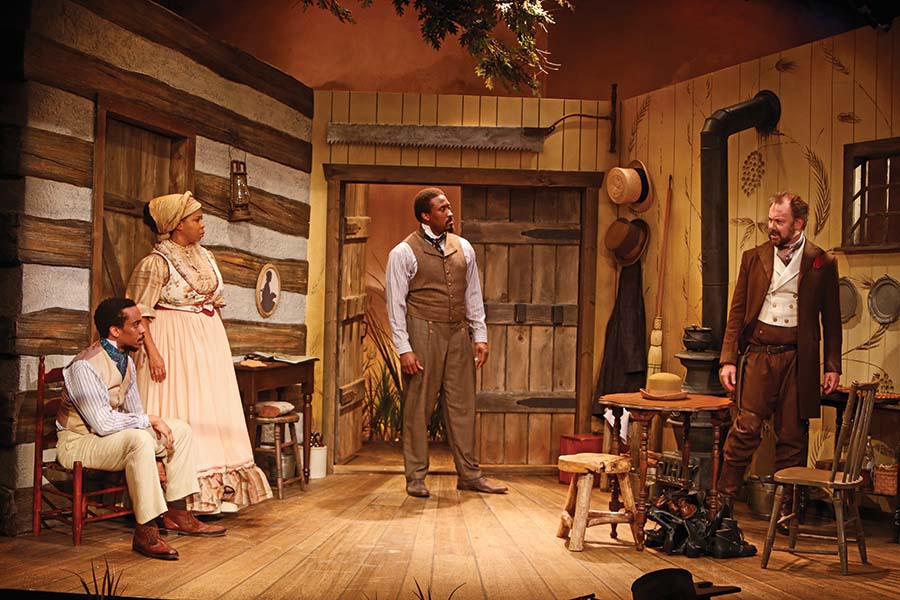
Theatres are heavily investing in people.
Theatre is a labor-intensive industry, and even more so when organizations are working to build deep relationships within their communities. Total payroll among Trend Theatres grew by nearly 14 percent from 2011 to 2015, matched by a 13-percent increase in the average number of paid personnel. Theatres spend more money by far on payroll than any other expense category, with nearly 55 percent of total expenses going to artistic, administrative, and production/technical personnel.
“For our year-round employees, we can’t compete in terms of salaries compared to a bigger city, particularly when we’re asking them to live in a remote mountain town,” observed Creede Rep’s Augur. But big cities don’t seem to have it any better. Said Signature’s Mallin, “New York City is a competitive market, not only because of its density but also the number of iconic institutions that may offer higher salaries. We’re finding for certain expertise, recruitment can be challenging and our personnel costs are increasing.”
Set to increase payroll expenses even more in the coming years are new overtime regulations at the federal level, minimum-wage increases at the state level, and continued health-insurance premium hikes. “We’re looking hard at the new overtime rules—that’s our biggest concern these days,” said Commonweal’s Cropp. “We run on an artistic-administrator model where everyone in the ensemble has been employed on salary. We’re looking at a massive overhaul to the way we do business in order to maintain our ensemble, which may result in a significant addition to our operating expenses.”
“We do what we can with benefits,” said Palm Beach Dramaworks’s Beryl. “We added free dental, pay for a larger percentage of health insurance, and give salary raises every year. When you have 26 people, and everyone’s been here a long time, that adds up. And our full-time staff size grew as we grew into our building. Every time we bit the bullet to bring on a new person, they inevitably needed someone to support them. I’m certain that in a year our new education director will need an assistant.”
Managing leaders described adding new line items to next year’s budget for legal counsel to advise them on the revised Fair Labor Standards Act rules, or having to redirect time and attention from other activities to planning for the changes. (Visit the Advocacy News section of tcg.org for resources about this issue.)
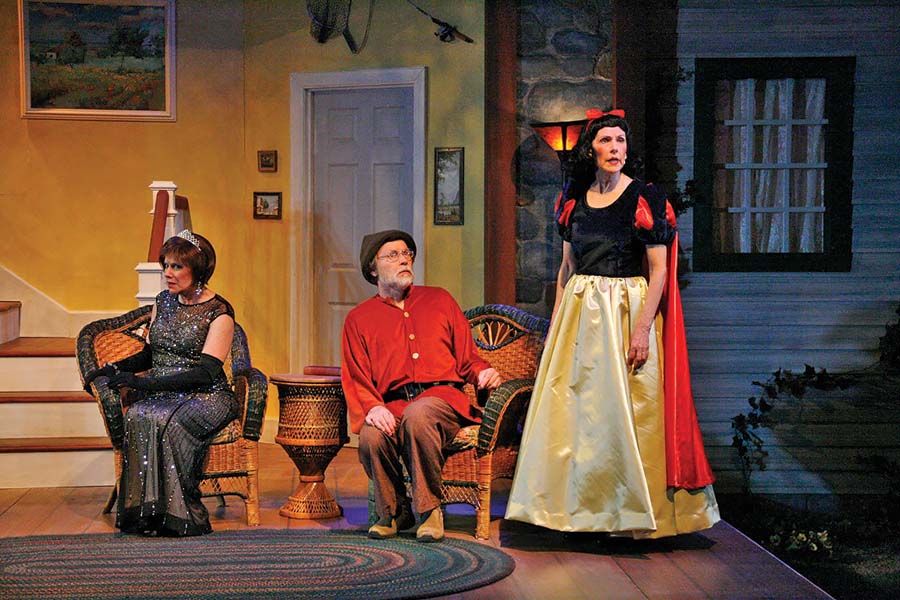
and Masha and Spike” at Bloomsburg Theatre Ensemble in 2015. (Photo by Bob Rush)
Theatres are hiring more artists, but there is a widening gap between artistic and administrative payroll.
The average total number of paid artists grew 20 percent from 2011 to 2015 among Trend Theatres, though the average number of full-time and part-time artistic staff remained steady. The average number of actor employment weeks was at a five-year high in 2015—a rise of more than 8 percent since the beginning of the period. Taking a longer view from the subset of 10-Year Trend Theatres, while artistic payroll grew by 10 percent between 2006 and 2015, administrative payroll grew by 22 percent, and production/technical payroll grew by 16 percent. The gap between administrative and artistic payroll reached its highest point yet in 2015.
Some theatres are returning to larger cast sizes. “We could do more smaller-cast shows, but over time we’ve morphed into three or four shows with larger casts,” said Palm Beach Dramaworks’s Beryl. Other theatres have regained their footing enough to add back permanent positions. Said Bloomsburg’s White-Spunner, “About four years ago we lost an ensemble member position. Just this year, we were able to go back up from seven to eight ensemble members.”
Victoria Nolan highlighted Yale Rep’s efforts to dramatically increase artist compensation over the past decade, in an effort to counter the industry-wide pay disparity and fairly compensate artists and production/technical staff. “We’ve chosen to spend our money in ways that are related to taking care of artists, making sure that everyone has enough for themselves and that they’re actually able to pay their assistants,” said Nolan. “I found out that directors were paying assistant directors out of their own pockets, as were designers. So we’ve doubled fees over the past decade.”
She continued, “When it comes to a choice between raising artist compensation this year, and adhering strictly to our four-year life cycle of replacing computers, I might say to our IT staff, ‘You have to stretch it another year because we need that for artistic compensation.’ If that means I go around with a broken screen on my laptop for another year, that’s okay. Of all the people you pay, you should be paying the most to artists. Artistic personnel overall should be paid more than administrative personnel overall. That’s a professional standard grant panels historically used as one important measure of your success. It still should be.”
Devon Smith is the cofounder of Measure, a digital studio in Portland, Ore.


